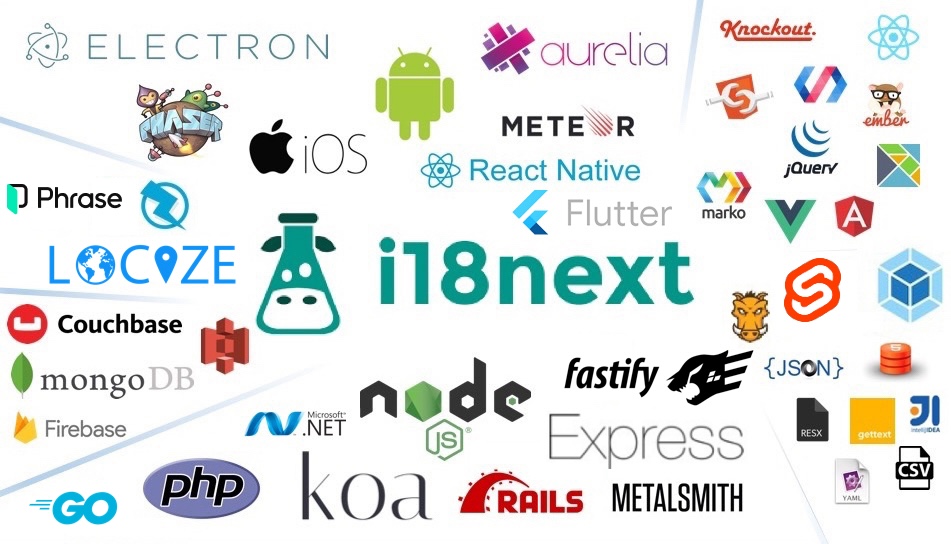Integration with Framework
- react-i18next:
react-i18next is built to work seamlessly with React, utilizing hooks and context to provide a smooth integration. It allows developers to easily access translation functions within functional components, enhancing the development experience and making it easier to manage translations in a React application.
- vue-i18n:
vue-i18n is tailored for Vue.js, leveraging its reactive data-binding capabilities. It integrates directly with Vue components, allowing for easy access to translation functions and reactive updates when language changes occur, making it a perfect match for Vue developers.
- angular-translate:
angular-translate is designed specifically for AngularJS applications, providing a simple way to integrate translation services directly into the AngularJS framework. It leverages Angular's dependency injection and allows for easy management of translation files and services, making it a natural fit for AngularJS projects.
Features and Flexibility
- react-i18next:
react-i18next is highly feature-rich, supporting nested translations, pluralization, context-based translations, and more. Its flexibility allows for extensive customization and configuration, making it suitable for complex applications that require detailed localization strategies.
- vue-i18n:
vue-i18n provides essential features such as message formatting, pluralization, and date/time localization. While it is powerful, it is also designed to be straightforward, making it easy to implement while still offering the flexibility needed for most applications.
- angular-translate:
angular-translate offers a range of features including dynamic language switching, interpolation, and support for multiple translation formats. However, it may lack some advanced features found in newer libraries, making it less flexible for complex internationalization needs.
Learning Curve
- react-i18next:
react-i18next has a moderate learning curve, particularly for developers new to React hooks or context. However, its comprehensive documentation and examples make it easier to grasp, especially for those already familiar with React's component model.
- vue-i18n:
vue-i18n is designed to be intuitive for Vue developers, with a low learning curve. Its integration with Vue's reactivity model makes it easy to implement and understand, allowing developers to quickly add internationalization to their applications.
- angular-translate:
angular-translate has a relatively gentle learning curve, especially for developers familiar with AngularJS. Its API is straightforward, allowing for quick implementation of basic translation features without extensive setup.
Performance
- react-i18next:
react-i18next is optimized for performance, with features like lazy loading of translations and efficient re-rendering of components. It minimizes unnecessary updates, ensuring that only components that need to re-render do so, which is crucial for maintaining performance in larger applications.
- vue-i18n:
vue-i18n is designed to be efficient within Vue's reactivity system. It ensures that only the components that depend on the current language or translation are updated when a language change occurs, providing high performance even in complex applications.
- angular-translate:
angular-translate is generally performant for small to medium-sized applications. However, as the number of translations grows, careful management of translation files and loading strategies is necessary to maintain performance, particularly in larger applications.
Community and Support
- react-i18next:
react-i18next has a large and active community, providing extensive documentation, tutorials, and support. Its popularity within the React ecosystem ensures that developers can find help and resources easily.
- vue-i18n:
vue-i18n benefits from the growing popularity of Vue.js, with a supportive community and good documentation. It is widely used in Vue applications, making it easy to find examples and solutions to common problems.
- angular-translate:
angular-translate has a smaller community compared to more modern libraries, which may result in limited resources and support. However, it is still maintained and can be a viable option for AngularJS applications.














